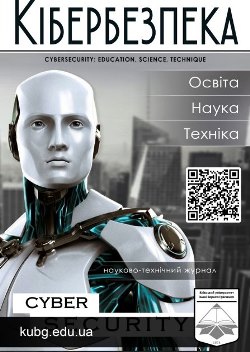DEFINING REQUIREMENTS TO DEVELOP INFORMATION SECURITY CONCEPT N HYBRID THREATS CONDITIONS. PART 2
DOI:
https://doi.org/10.28925/2663-4023.2019.6.112121Keywords:
threats, risks, classification, cyber security, strategy, conceptAbstract
Current article provides the trends of the hybrid threats landscape for 2020 and further. The key aspects of the implementation of hybrid threats and ways of counteracting them in cyberspace, which are closely related to the constant change of directions of cyber-attacks, improving their efficiency and speed of implementation, the use of artificial intelligence systems to ensure the security of information resources and the creation of adaptive systems of adversity to information and cyber threats , the use of machine learning techniques for a better understanding of the current state of threats, the application of artificial intelligence principles and responsive scenarios for predicting cyberattacks, developing customized action plans that rely on artificial intelligence systems to improve threat detection and response speed, utilize counterintelligence and counter-methods to respond quickly to any spyware before initiating active action, enhancing communication between law enforcement agencies to form a unified approach for interaction between law enforcement agencies at international and local levels, government organizations, the corporate sector and experts in the field of security.
The article defines the necessity for development of experts validated strategies to protect against information and cyber-attacks by criminals. The article describes the object of protection with determination of purpose and basic functions of the system, group of tasks solved in the system, classification of users of the system, organizational structure of service personnel, structure and composition of a complex of software and hardware, types of information assets stored and processed in system, structure of information flows, characteristics of channels of interaction with other systems and entry points.
Downloads
References
Borsukovskii Y.V., Borsukovska V.Y., Buriachok V.L. «Directions for creation of informational security policies for the state, banking and private sectors», Modern Methodologies, Innovations, and Operational Experience on the Field of Technical Science: Conference proceedings, December 27-28, 2017, Radom, Republic of Poland, p. 8-11
Borsukovska V.Y., Borsukovskii Y.V. «Business Continuity: new trend or necessity», Economy. Management. Business. - 2017, № 2(20), с. 48-52
Borsukovskii Y.V., Buriachok V.L., Borsukovska V.Y. «Basic ways to ensure cyber security of state and private sectors», Modern Information Security, - 2017, № 2(30), с. 85-89
State Service of Special Communication and Information Protection of Ukraine. [Online]. Available: http://www.dsszzi.gov.ua/dsszzi/control/uk/index [Accessed: 6 December 2019]
Ukrainian Research and Training Center of Standardization, Certification and Quality. [Online]. Available: http://uas.org.ua/ua/ [Accessed: 6 December 2019]
Budstandard Online - Document service. [Online]. Available: http://online.budstandart.com/ua/ [Accessed: 6 December 2019]
International Organization for Standardization. [Online]. Available: https://www.iso.org [Accessed: September 25, 2019]
International Electrotechnical Commission. [Online]. Available: https://www.iec.ch/ [Accessed: 6 December 2019]
Borsukovskyi Y.V., «Defining requirements to develop information security concept n hybrid threats conditions. Part 1», Cybersecurity: education, science, technique, - 2019, №1(5), p. 61-72 . . [Online]. Available: https://doi.org/10.28925/2663-4023.2019.5.6172 [Accessed: 6 December 2019].
Threat Landscape Report. [Online]. Available: https://www.fortinet.com [Accessed: 6 December 2019]




